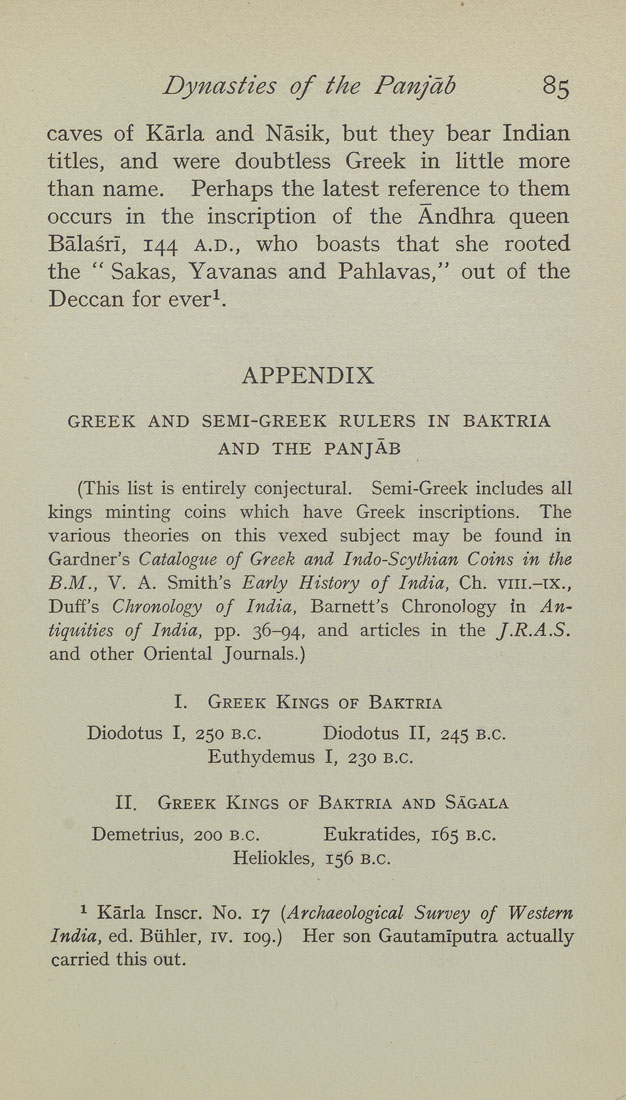Dynasties of the Panjab 85
caves of Karla and Nasik, but they bear Indian
titles, and were doubtless Greek in little more
than name. Perhaps the latest reference to them
occurs in the inscription of the Andhra queen
Balasri, 144 A.D., who boasts that she rooted
the " Sakas, Yavanas and Pahlavas," out of the
Deccan for ever^.
APPENDIX
GREEK AND SEMI-GREEK RULERS IN BAKTRIA
AND THE PANJAB
(This list is entirely conjectural. Semi-Greek includes all
kings minting coins which have Greek inscriptions. The
various theories on this vexed subject may be found in
Gardner's Catalogue of Greek and Indo-Scythian Coins in the
B.M., V. A. Smith's Early History of India, Ch. viii.-ix.,
Duff's Chronology of India, Barnett's Chronology in An¬
tiquities of India, pp. 36-94, and articles in the J.R.A.S.
and other Oriental Journals.)
I. Greek Kings of Baktria
Diodotus I, 250 B.C. Diodotus II, 245 B.C.
Euthydemus I, 230 B.C.
II. Greek Kings of Baktria and Sagala
Demetrius, 200 b.c. Eukratides, 165 B.C.
Heliokles, 156 B.C.
^ Karla Inscr. No. 17 {Archaeological Survey of Western
India, ed. Biihler, iv. 109.) Her son Gautamiputra actually
carried this out.
|








